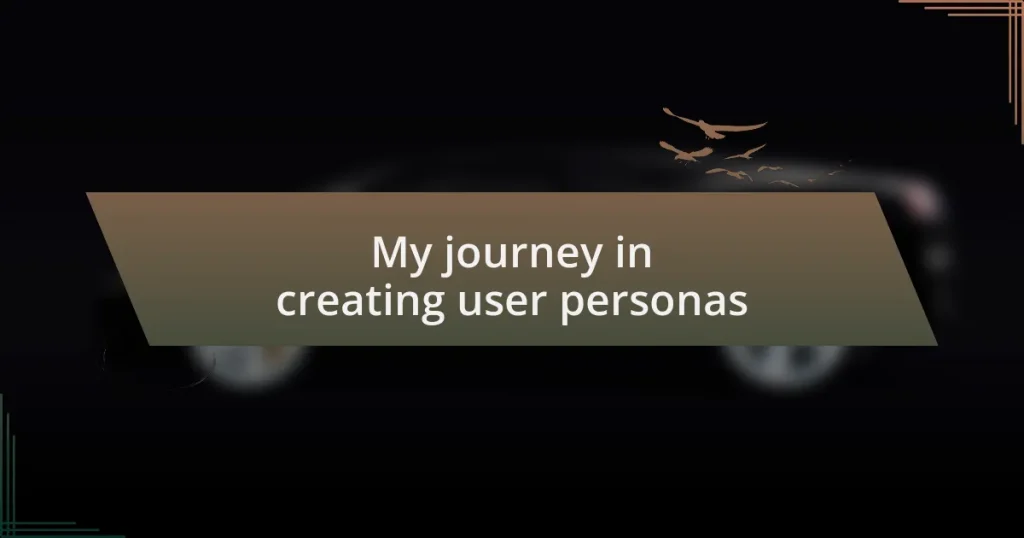Key takeaways:
- User personas are fictional representations of target audiences based on real data, enhancing understanding of user needs and pain points.
- Creating user personas involves thorough research, categorizing insights, and synthesizing them into detailed profiles that guide design decisions.
- Tools like Adobe XD, Miro, and Google Analytics help visualize user interactions and insights, making personas feel more relatable and actionable.
Understanding user personas
User personas serve as fictional representations of your target audience, crafted from real data and insights. I remember the first time I developed a persona for a web design project; it felt like opening a door to a whole new world of understanding. Who are these people? What do they truly want? These questions ignited my curiosity and pushed me to dig deeper.
When I gathered feedback from actual users, I realized that every response painted a clearer picture of their needs and pain points. It was almost exhilarating to see how a well-researched persona could guide design choices, leading to features that resonated with users. Can you imagine creating a website without fully appreciating who will interact with it? The thought alone is daunting.
The beauty of user personas lies in their ability to humanize data. Instead of abstract statistics, I found myself catering to ‘Sarah,’ a busy mom juggling work and family, or ‘Mike,’ a tech-savvy millennial eager for the latest trends. These stories turned statistics into tangible goals, making every design choice feel purposeful and driven by real human emotions. This emotional connection is why I advocate for crafting detailed personas in any web design process.
Steps to create user personas
To create user personas, the first step is to conduct thorough research. I often begin by gathering demographic data, user interviews, and surveys. It’s exciting to immerse myself in users’ thoughts and feelings; this firsthand information serves as the foundation for genuinely understanding their motivations.
Next, I categorize the insights and identify patterns. For instance, I once discovered that several users shared a common goal—efficient navigation on the website. Realizing this allowed me to develop a persona that focused specifically on a user’s desire for seamless interaction. Have you ever noticed how sometimes the simplest insights can lead to the most profound design alterations? That’s the magic of personas.
Finally, I synthesize the findings into a concise profile, complete with a realistic name and backstory. When I created ‘Emily’, a fashion-forward individual constantly seeking inspiration, it transformed my design approach entirely. Instead of just ticking boxes, I aimed to cater specifically to her tastes and preferences. This is where the persona truly comes to life and starts influencing design decisions in meaningful ways.
Tools for creating user personas
When it comes to tools for creating user personas, I find that platforms like Adobe XD and Sketch play a significant role. I remember integrating user personas directly within these tools allowed for a more visual representation of the users I was designing for. Being able to attach real images and quotes helped me connect emotionally with the personas, making them feel less like mere data and more like real individuals with desires.
Another invaluable resource in my toolkit is user journey mapping software, such as Miro or Lucidchart. These tools enable me to visualize the user experience from start to finish, illustrating how each persona interacts with the website. I can’t stress enough how vital it is to map out user pain points and motivations during this phase—seeing everything laid out visually often sparks new design ideas I hadn’t considered before.
Lastly, I’ve also dabbled with survey and analytics tools like Typeform or Google Analytics to gather insights that can fill in the gaps. For instance, while analyzing user interactions, I once stumbled upon a treasure trove of data that influenced my persona’s needs and preferences. Have you ever had a moment when numbers transformed your understanding? It’s like finding a hidden key that unlocks a door to better design solutions.
